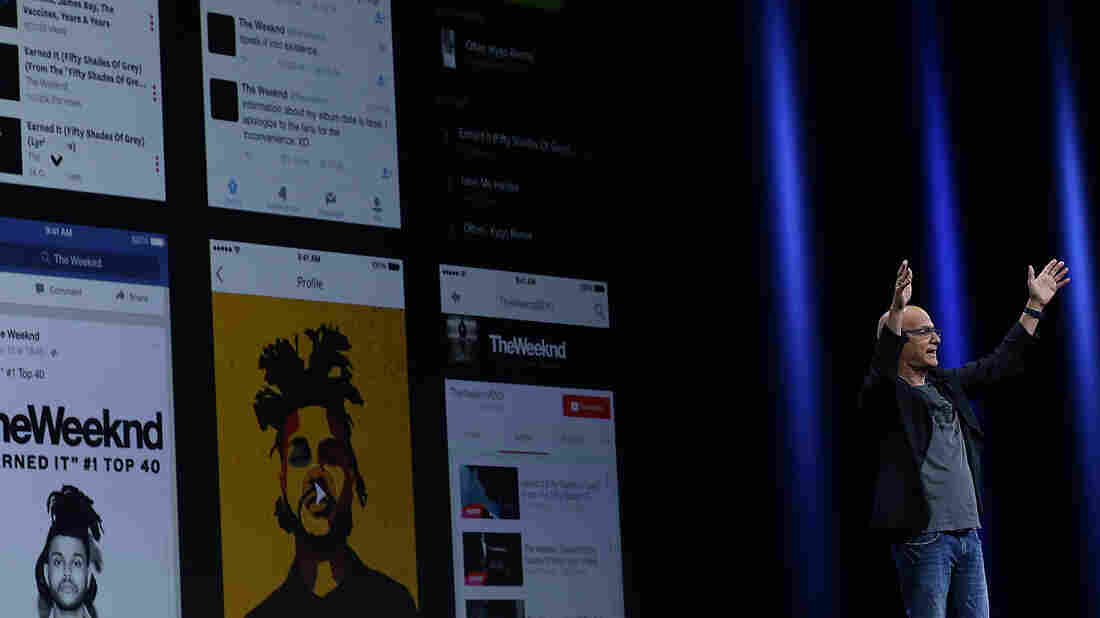Here's How Inflation Has Eroded American Workers' Overtime Eligibility
Sheila Abramson serves customers of Langer’s Delicatessen in Los Angeles in 2013. Kevork Djansezian/Getty Images hide caption
itoggle caption Kevork Djansezian/Getty Images
President Obama is once again poised to go it alone on labor policy, this time on overtime. The Labor Department is expected in the coming weeks to release a rule making millions more Americans eligible for overtime work — currently, all workers earning below $455 a week, or $23,660 a year, are guaranteed time-and-a-half pay for working more than 40 hours a week. The law may raise that as high as $52,000, Politico reports.
The rule would also change the regulations outlining which employees earning above that threshold are eligible — currently, employers can exempt some employees above that threshold if those workers could be considered “white-collar.”
This would add to a series of workplace policies that, failing congressional approval, the president has expanded in limited form through executive order — upping the minimum wage among federal contractors and attempting to shrink the gender wage gap among federal contractors. He also mandated paid leave for federal workers.
This particular rule change would be a long time in coming — Obama had in March 2014 directed the Labor Department to overhaul the overtime regulations.
The overtime threshold has only been changed once since 1975. At that time, it was set at $250 per week. Then in 2004, President George W. Bush updated it to $455. And that means inflation has slowly diminished the share of Americans who are guaranteed eligibility.
When you adjust for inflation, you can see how much the threshold has fallen — data from the St. Louis Federal Reserve (going back to 1979) shows that, as of the late 1970s, the threshold was right at or slightly above the median worker’s pay level. Today, it’s at around half.
The income line in the chart — that top one — represents the exact middle wage, with half the full-time working population above and below it at any given time. So while the threshold fell away from the median pay level, so did the number of workers legally guaranteed overtime pay.
Indeed, according to the left-leaning Economic Policy Institute, as of 2013, only 11 percent of full-time workers were guaranteed overtime. Bumping the threshold up to around $50,000, for example — roughly where it was in 1975, adjusted for inflation — would bring 47 percent of workers under the threshold, making around 6 million more workers eligible, by one estimate.
The debate over the overtime threshold sounds remarkably similar to the minimum wage debate — in that debate, opponents in the business community say a higher wage would cost jobs. In the debate over overtime, the fear is that it could cost workers hours as employers decide they don’t want to shell out time-and-a-half pay.
And as in the minimum wage debate, advocates of higher overtime thresholds say lawmakers should simply index the level to inflation — not only would it save lawmakers from periodic fights over how much to change the law, but it would also help lower-paid hourly workers by making sure they’re all paid fairly by keeping wage policies consistent with where prices go.
“The original notion was that the people who don’t control their own hours, who don’t need the protection of the law, get paid overtime,” says Ross Eisenbrey, vice president at EPI. “Where the law set the threshold in 1975, that’s really supposed to demarcate the people about whom there’s no question — they are not the most powerful people.”
Tying the level to inflation, he says, would ensure that the workers who need the overtime are consistently eligible for it.
The threshold has never been tied to inflation, and advocates like Eisenbrey and the liberal Center for American Progress have long pushed for such a change.
But opponents see reason to keep the level static. One reason, says one economist, is that an indexed overtime level doesn’t give businesses enough leeway to deal with high inflation.
“I think it’s a bad idea [to index the overtime threshold to inflation] because you want to preserve some flexibility,” says Michael Strain, a resident scholar at the right-leaning American Enterprise Institute. “We have been in a low-inflation environment for some time, and we’re kind of used to that in how we look at things. But it’s entirely conceivable that 10 years from now, we may be in a different environment.”
And without that flexibility, employers might further restrict hours, or they might pressure employees to get even more work done in their 40 hours.
Another argument is that inflation isn’t uniform everywhere. The U.S. Chamber of Commerce argued in a February letter to Secretary of Labor Tom Perez that the price index used to adjust wages is based on prices in urban areas — it could distort labor markets in rural areas.
But then, inflation will still happen, and the threshold would still periodically have to rise. So how do you ensure that Congress does it? Strain says one solution could be including a provision in the overtime law that forces Congress to revisit the policy every few years. That way, the policy isn’t on “autopilot,” he says, but it still changes regularly.
Even then, however, there’s no guarantee Congress would actually regularly change the law. After all, they have an annual deadline to pass a budget. They haven’t passed all their spending bills on time in almost 20 years.
This entry passed through the Full-Text RSS service – if this is your content and you’re reading it on someone else’s site, please read the FAQ at fivefilters.org/content-only/faq.php#publishers.










